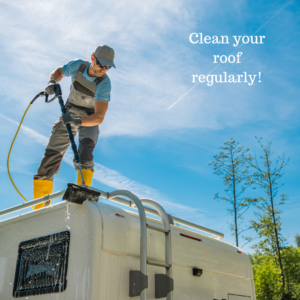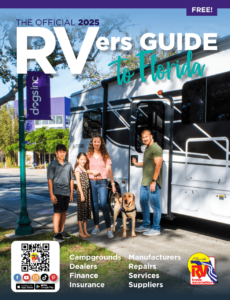RV Roof Maintenance: What You Need to Know
Why RV Roof Maintenance is Important
Your RV’s roof is one of its most critical components, protecting the interior from the elements. Proper maintenance ensures longevity, prevents costly repairs, and keeps your RV in top condition. Neglecting roof maintenance can lead to leaks, mold growth, and structural damage that can be expensive to fix.
Types of RV Roofs
Before diving into maintenance tips, it’s important to understand the different types of RV roofs:
- Rubber (EPDM & TPO): Lightweight and durable, rubber roofs require regular cleaning and sealing to prevent deterioration.
- Fiberglass: More resistant to damage but can crack over time.
- Aluminum: Durable and low maintenance but prone to denting.
Each roof type requires specific care to maintain its integrity.
Regular RV Roof Inspections
Inspecting your RV roof at least twice a year (before and after travel season) helps you catch issues before they become serious problems. Here’s what to look for:
- Cracks or gaps in the roof’s surface
- Loose or deteriorating sealant around vents, skylights, and air conditioners
- Soft spots indicating water damage
- Debris accumulation that could lead to mold growth
A routine walkaround and a closer inspection using a ladder can help identify potential trouble areas.
If you are uncomfortable with climbing onto your RV roof, consider having regular inspections done by your RV Service Center or a Mobile RV Technician. These professionals can thoroughly inspect and perform routine maintenance, ensuring your roof stays in top condition without you having to take any risks.
Cleaning Your RV Roof
Dirt, grime, and environmental debris can break down your RV roof over time. Regular cleaning prevents buildup and extends the lifespan of the materials.
How to Clean an RV Roof:
- Choose the Right Cleaner: Use a cleaner formulated for your specific roof type. Avoid harsh chemicals that can damage the material.
- Rinse Off Loose Dirt: Spray down the roof with water before applying the cleaner.
- Scrub Gently: Use a soft-bristled brush or sponge to remove stubborn grime.
- Rinse Thoroughly: Ensure no residue is left behind, as some cleaners can degrade roofing materials if not washed off properly.
- Dry and Inspect: Once clean, inspect the roof for any potential issues before sealing or resealing.
Resealing Your RV Roof
Sealants prevent water intrusion and protect against UV damage. Over time, sealants can crack or peel, leading to leaks.
Steps to Resealing:
- Remove Old Sealant: Use a plastic scraper to gently remove loose or deteriorated sealant.
- Clean the Area: Wipe down the surface with a mild cleaner to remove dirt and oils.
- Apply New Sealant: Use a compatible sealant (Dicor for rubber roofs, silicone for fiberglass) and apply evenly.
- Let It Cure: Allow the sealant to dry fully before exposing it to rain or heavy moisture.
Preventing and Repairing RV Roof Leaks
Leaks are the biggest threat to an RV roof. Catching them early can save thousands in repairs.
How to Prevent Leaks:
- Keep up with regular inspections and resealing.
- Use RV covers when stored to protect against sun and weather damage.
- Ensure gutters and drainage systems are clear to prevent water buildup.
Fixing a Leak:
- Identify the leak’s source by checking inside for water stains.
- Dry the area thoroughly before applying a sealant patch.
- If damage is severe, consider professional repairs or even roof replacement.
RV Roof Coatings for Extra Protection
Roof coatings add an extra layer of protection and extend the lifespan of your roof. Options include:
- Acrylic coatings: UV-resistant and flexible.
- Silicone coatings: Waterproof and long-lasting.
- Rubber coatings: Specifically designed for EPDM and TPO roofs.
Applying a protective coating every few years can reduce maintenance needs and improve durability.
When to Replace Your RV Roof
Even with proper maintenance, RV roofs have a lifespan. If you notice:
- Persistent leaks that don’t seal properly
- Large areas of soft spots or sagging
- Significant cracking or peeling
…it may be time for a full replacement. This is a major investment but necessary to protect your RV from extensive damage.
Conclusion
Proper RV roof maintenance is essential to prolonging the life of your vehicle and preventing expensive repairs. By regularly inspecting, cleaning, sealing, and protecting your roof, you can enjoy worry-free travels for years to come.

